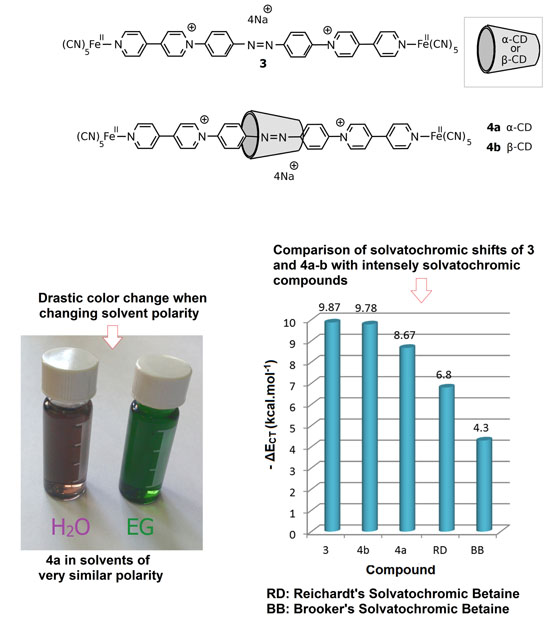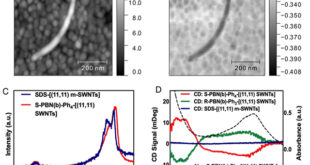Dyes and Pigments 113, 709-722 (2015). Ioanna Deligkiozi1, Evangelos Voyiatzis2, Athanase Tsolomitis1, Raffaello Papadakis1, 3
1 School of Chemical Engineering, Laboratory of Organic Chemistry, National Technical University of Athens, 15780 Athens, Greece.
2 Eduard-Zintl-Institut fuer Anorganische und Physikalische Chemie, Technische Universität Darmstadt, D-64287 Darmstadt, Germany.
3 Department of Chemistry, BMC Uppsala University, 75123 Uppsala, Sweden.
Abstract
The solvatochromic behavior of novel synthesized azo-containing viologen-based rotaxanes, combining push-pull linear and alpha or beta-cyclodextrin macrocyclic components is examined. These rotaxanes are stoppered by pentacyanoferrate(II) units. The latter stabilize these systems and furthermore act as strong electron donors. These units are linked to strong electron withdrawing viologen units thus giving rise to an exceptionally intense solvatochromic behavior. Suitable solvent polarity scales and Linear Solvation Energy Relationships (LSERs) were employed in order to rationalize the solvent polarity effects observed, both specific and non-specific ones. The results for the title compounds as well as their Cyclodextrin-Free-Dumbbell (CFD) like analogue, are compared to recent published solvatochromic data regarding similar smaller pentacyanoferrate(II) complexes as well as other highly solvatochromic compounds. Structural effects on the solvatochromic intensity as well as the contribution of different solvent-solute interactions are rationalized and quantified. (C) 2014 Elsevier Ltd. All rights reserved.
highly medium responsive dyes
 Advances in Engineering Advances in Engineering features breaking research judged by Advances in Engineering advisory team to be of key importance in the Engineering field. Papers are selected from over 10,000 published each week from most peer reviewed journals.
Advances in Engineering Advances in Engineering features breaking research judged by Advances in Engineering advisory team to be of key importance in the Engineering field. Papers are selected from over 10,000 published each week from most peer reviewed journals.


